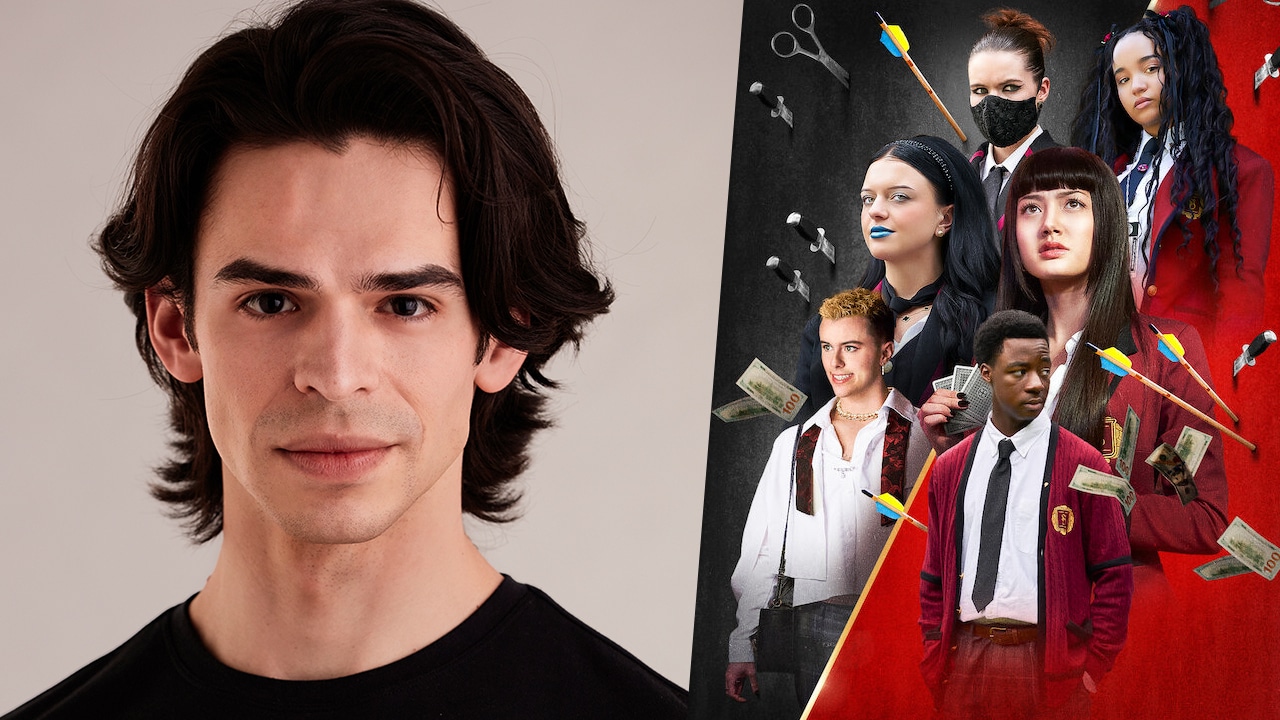-
Lifestyle Hotels: the Ultimate Network Impact Move – By Bryan Younge – Image Credit Marriott International
Lifestyle hotel brands have been getting a lot of attention lately – and for good reason. It’s not because they’re the biggest money-makers in the portfolio (in fact, many aren’t). Their real value comes from the role they play in shaping brand perception. These properties act as strategic “network impact” tools, helping to elevate the entire hotel family.
Even if they don’t always generate the highest returns, they contribute by making the broader portfolio more relevant and appealing – especially to younger, experience-driven travellers. In many ways, lifestyle brands are the front-facing ambassadors of modern hospitality, bringing energy, identity, and fresh perspective to the mix.
Lifestyle hotels 101: not just rooms, but vibes
Lifestyle hotels are not merely accommodations – they are meticulously designed experiences. These properties prioritize aesthetic appeal, local culture, and a sense of community, crafting environments that appeal to both global nomads and design aficionados. Unlike traditional properties focused solely on operational efficiency or corporate uniformity, lifestyle hotels are curated with intentionality. They offer immersive social spaces, bespoke F&B concepts, and programming that transforms the hotel into a destination in its own right.
This strategy resonates with travellers seeking more than comfort – they want story, texture, and soul. Whether it’s a locally sourced breakfast in a courtyard filled with native flora, or a jazz trio playing nightly in the bar, lifestyle hotels deliver what traditional formats struggle to replicate: authenticity and emotional resonance.
The network impact strategy: Losing small, winning big
If lifestyle hotels are notoriously complex to operate and not always the most lucrative in direct margins, why are global hospitality brands dedicating significant resources to them? The answer lies in their indirect value – lifestyle hotels function as “network impact enhancers.” In other words, they may not be the highest earners on a per-key basis, but they have an outsized influence on consumer perception, loyalty program engagement, and cross-brand halo effect.
Accor’s joint venture with Ennismore is a textbook case. Through Ennismore’s array of culture-forward brands – The Hoxton, SLS, Mama Shelter, and Delano among them – Accor expands its appeal among younger, affluent, and socially engaged travellers. These guests may begin their journey in an Ennismore property but are more likely to consider other Accor brands across different price points and geographies, strengthening the group’s entire ecosystem.
Marriott has made similarly strategic moves. With its acquisition of Starwood, it inherited W Hotels, Aloft, and Element – all of which now sit within its lifestyle segment. To expand the lifestyle footprint, Marriott introduced Moxy, a brand designed to combine affordability with high-style, aimed directly at the socially connected Millennial and Gen Z traveller. It also partnered with Ian Schrager to launch the Edition brand, a luxury lifestyle concept that combines boutique scale with five-star service. Marriott now boasts one of the largest lifestyle portfolios globally, with projects in development in cities like Tokyo, Buenos Aires, and Cartagena.
Hilton has entered the arena with gusto, developing brands like Canopy by Hilton, Motto by Hilton, and Tempo by Hilton. These brands are being deployed in urban cores, college towns, and resort areas alike. Hilton also expanded its lifestyle ambitions through partnerships and acquisitions, including the Graduate Hotels brand and a global development agreement for the NoMad Hotels concept. This strategic layering allows Hilton to target distinct guest psychographics while driving loyalty and capturing greater share of wallet.
Hyatt, for its part, has taken an aggressive acquisition route. With the purchase of Two Roads Hospitality, Hyatt gained the Thompson Hotels, Alila, Joie de Vivre, and Destination brands. It also acquired Dream Hotel Group and recently announced a strategic investment in Standard International. These lifestyle brands allow Hyatt to compete in dense urban markets and resort destinations with boutique-style offerings that are heavy on design, culture, and curated experiences.
InterContinental Hotels Group (IHG) was an early mover with its acquisition of Kimpton Hotels & Restaurants. That deal immediately gave IHG a credible lifestyle brand with a strong identity and loyal following. Since then, IHG has launched Hotel Indigo and the Vignette Collection—two more lifestyle-oriented flags – and continues to expand Six Senses into the wellness-focused luxury lifestyle category. Each brand serves a distinct purpose in the lifestyle ladder, from local immersion to regenerative wellness.
Young professional vs. unprofessional: meet your new guests
The demographic evolution in hospitality demand is best illustrated by the emergence of two overlapping yet distinct personas: the “young professional” and the “unprofessional.”
Young professionals are today’s ambitious, tech-savvy, upwardly mobile career builders. They’re driven, digitally connected, and increasingly untethered from traditional office constraints. These travellers blend business and leisure with surgical precision, booking boutique hotels that double as networking venues and lifestyle hubs. They value seamless tech integration, wellness facilities, and sustainable practices.
The “unprofessional,” in contrast, is not a pejorative. Rather, it describes a traveller untethered not only from offices but from the very idea of rigid schedules and conventional career paths. These are the digital nomads, gig economy veterans, influencers, and startup founders who may be working—or not—while traveling, often chasing inspiration as much as income.
In truth, these two groups are increasingly converging. Both are discerning, experience-driven, and unwilling to compromise on authenticity. What’s more, emerging data shows that many of today’s newly minted three-comma-club members (billionaires) are coming from these very ranks. Whether via tech entrepreneurship, finance, or content-driven business models, the pathways to extreme wealth have diversified, and many are rooted in the same values that lifestyle hotels so effortlessly embody: independence, creativity, and identity.
A playful rivalry: who’s harder to impress?
Hotel operators face a unique challenge in appealing to both of these audiences. The young professional might scrutinize your app functionality and loyalty program nuances, while the unprofessional might critique your ambient lighting or lack of third-wave espresso. Both expect curated design, personalized service, and a hospitality experience that aligns with their values – and they expect it to be seamless.
Delivering this level of performance requires a sophisticated operating model. It’s not enough to slap on local artwork and call it a day. Lifestyle hotels must balance strong aesthetics with operational excellence, delivering a differentiated yet dependable product that consistently delights across touchpoints.
Strategically necessary, operationally challenging
From the U.S. to Latin America and the Caribbean, the expansion of lifestyle hotels is robust. Marriott’s Moxy brand, Hyatt’s Thompson and Alila, Hilton’s Motto and Canopy, and Accor’s Ennismore portfolio are all carving out space in this dynamic landscape. Moxy has launched or signed projects in Medellín, Mexico City, and Punta Cana, and Hilton is introducing Motto properties in São Paulo, Lima, and Cancun.
Further afield, lifestyle brands are becoming key assets in Asia-Pacific and the Middle East. Accor and Ennismore are expanding Tribe, Jo&Joe, and SO/ in cities like Bangkok, Dubai, and Ho Chi Minh City. IHG’s Hotel Indigo continues to launch in culturally rich locations like Kyoto and Tbilisi. Hyatt’s Alila brand is expanding into India and Southeast Asia, bringing eco-luxury to experiential travellers seeking mindfulness and sustainability.
In Africa, Accor is using lifestyle brands as a bridge into emerging markets. Tribe Nairobi has garnered critical acclaim for blending cosmopolitan design with Kenyan culture. In Europe, the lifestyle concept is being amplified with investments in major markets such as Berlin, Barcelona, and Amsterdam, where competition is fierce and differentiation is paramount.
Even leisure-heavy regions are not immune. The Caribbean is seeing a new wave of lifestyle resort developments – properties like the EDITION in Riviera Maya and the Thompson Playa del Carmen illustrate how experiential, design-led hospitality is reshaping even sun-and-sand destinations. Meanwhile, brands like Selina – originating in Latin America and focused on digital nomads – are blending co-working, wellness, and hostel chic in ways that blur the lines between traditional hospitality formats.
Long-term gains and brand loyalty
The long-term benefits of lifestyle hotels extend well beyond direct revenues. They act as brand-building assets – intangible but powerful in shaping perception. A guest captivated by a Hoxton stay in Chicago is more likely to consider an Accor property in Barcelona. A traveller who experiences Moxy’s energy in Medellín may explore Marriott’s broader offerings for business travel.
Moreover, these lifestyle guests are vocal. Their Instagram stories, TikToks, and travel reviews form a decentralized marketing engine, amplifying brand reach and relevance without a traditional advertising spend. This earned media power alone justifies the brand investment for many hospitality companies.
More importantly, these hotels often serve as trend incubators. From plant-based culinary concepts to sustainability certifications, many innovations piloted at lifestyle hotels eventually ripple out across an entire portfolio. Thus, these properties are also strategic test beds for future-proofing brand strategies.
The bottom line: playing the long game
For hospitality professionals and strategists, the lesson is clear: lifestyle brands are more than a trend – they are a strategic lever. Their complexity and cost are offset by their ability to enhance portfolio performance through network impact. They captivate influential traveller segments – both the young professional and the creatively unbound unprofessional – while keeping legacy brands fresh by association.
And while they may not always deliver short-term profit peaks, lifestyle hotels offer long-term brand equity, cultural cachet, and market differentiation. In an era where the traveller holds all the cards – and often a smartphone full of options – being the most interesting brand in the room isn’t optional. It’s essential.

Bryan Younge – Managing Partner at Horwath HTL. Connect with Bryan on LinkedIn.
This article originally appeared on Horwath HTL.















